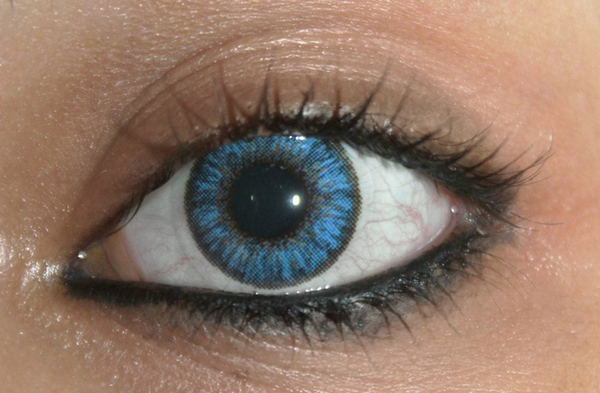History of Optics (Part 2)

Second part of our file on the history of optics . It's time to talk about the innovations that have followed the research of antiquity and rebirth and to mention some of the major players and companies in the field. As much as to make a point on the future of optics …
A new profession: optician
This is the 18th century that street spectacles of merchants declare optician. This title is used to designate spectacle makers and other precision optical objects .
Until the beginning of the 20 th century, these opticians have different professions: they are paramedical tradesmen. or manufacturers-artisans.
The technique is simple: we just try glasses and if we see the slightest improvement in its view, we leave with! No need to take the time to just sit down.
[Caption id = "attachment_10504" align = "aligncenter" width = "600"]  @Essilor [/ caption]
@Essilor [/ caption]
The first major optical shop was founded in 1919 in Paris, rue de Rivoli. It is Georges Lissac , already owner of his first store since 1919, and his brothers who open it. Inside the building, part workshop, part sale.
This place is a revolutionary because Lissac develops a unique concept: to carry out a free eye exam for its customers.
the imprint of Georges Lissac on the world of optics in the 20th century will be significant since it will first create the LLC Lissac Brothers and two other companies in 1946 (SIL for the manufacture of frames) and 1948 (LOS for special ophthalmic lenses.)
The latter will change its name to LOR (for rational ophthalmic lenses) and all the companies will be grouped under the name SILOR (Industrial Society of Eyewear and Rational Optics).
The Silor group, in 1972, merged with its competitor Essil to create Essilor , now world leader in the glass market
 @Essilor [/ caption]
@Essilor [/ caption]
Glasses to protect oneself from the sun's rays

If the improvement of vision is part of everyday life in the late 16th century, it now needs to protect from the sun and its harmful ultraviolet rays. For this, the Europeans will, in the 19th century, fill their glasses nose clip with inspired sunglasses quartz glasses created by the Chinese.
In 1932, Edwin H Land created the polarizing filter and christened it Polaroid , a sheet of synthetic material used to polarize sunlight . The sheet absorbs light that is polarized parallel to the direction of crystal alignment, allowing this material to be used as a light polarizer .
That's about at this time that campaigns of sensitization to the harmful effects of the UV rays are born.
In the 60's, the company Corning develops a new mineral form of glass: the photochromic glass, which has the property of being tinted according to the quantity of UV to which it is subjected.
Finally, in the 90's are manufactured the first organic glasses with variable hues. ]
A lens directly in the eye?
The works of Leonardo da Vinci and René Descartes ( see Part I ) reinforce the idea of using refraction made on light by a liquid in order to improve vision. [ =]
In 1887, a German ophthalmologist by the name of Adolph Fick created a glass optical device to cover almost the entire eye. Unfortunately, it is so uncomfortable that wearing it for more than a few hours is a feat.

But this work will lead other researchers to work a lens shape ever more adapted to the eye. That's what another German, August Müller, does. It results from his research a so-called scleral lens, blown glass allowing coverage of the cornea and sclera
The comfort of this lens is out of proportion with that of Fick. The same year, Louis Girard will manufacture the same type of lens in the scleral form.
In the 1920s, Zeiss made crystal scleral glasses , whose shape could be adapted to the patient's eye. The first lenses whose shape is not standardized are created.
But it is especially during the 1960s that two Czech chemists, Otto Wichterle and Drahoslav Lim , publish their work on hydrophilic gels for biological use

This hydrogel will allow to manufacture the first soft lenses in 1961 and to revolutionize the comfort of the wearing of lenses. Indeed, the flexibility of the device allows the oxygen to move through the lens towards the ocular space.
For the next 25 years, the polymers , materials used in the soft lens manufacturing, will be constantly improved. In 1992, Daysoft's Scottish Scottish Ron creates disposable soft lenses , which will not require any cleaning products.
And the future in all this?
The great History of optics is rich, but it is not over. Even today, eyewear, glassmakers, opticians work together to continually try to improve our vision but also our comfort of life.
Many articles have evoked this subject on our blog and will continue to do so.
Beyond these technical and technological prowess , this knowledge that extends since ancient times, these great names whose work has changed our world , we note that one thing remains paramount: the constant improvement of our visual health.
Of course, as in the past, this work will be taken over, transformed and improved to meet the needs of the greatest number. Legislation will continue, like technical progress, to be part of the players in a constantly changing sector and time will not stop.


